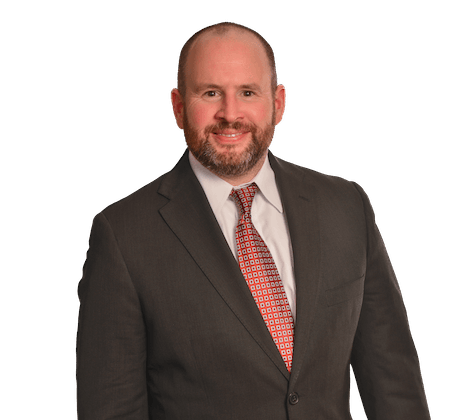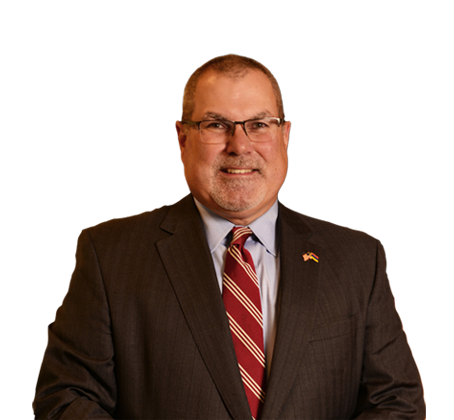Late last week, the United States Department of Labor (“DOL”) continued its rapidly-evolving effort to address the historic Coronavirus (“COVID-19”) pandemic by releasing a temporary rule — available here. The DOL promulgated temporary regulations to implement the Families First Coronavirus Response Act’s (“FFCRA”) Emergency Paid Sick Leave Act (“EPSLA”) and Emergency Family and Medical Leave Expansion Act (“EFMLEA”). The rule, effective from April 2 through December 31, 2020, adds meat to the EPSLA and the EFMLEA, giving employers more guidance as they navigate this new legal landscape. Below are some of the highlights of the comprehensive new set of temporary regulations.
Definitions
The temporary rule first sets out the definitions for the terms used in the EPSLA, EFMLEA, and the rule. Of note are the following:
First, the regulations provide that an “employer” for purposes of the FFCRA is any private employer with fewer than 500 employees, any non-private entity with at least one employee, and any public agency with at least one employee. 29 C.F.R. § 826.10(a). The rule further provides that federal, state, and local governments, and governmental agencies are considered “public agencies.” 29 C.F.R. § 826.10(a).
Second, “son or daughter” under the FFCRA (as under the FMLA) includes a child “18 years of age or older who is incapable of self-care because of a mental or physical disability.” 29 C.F.R. § 826.10(a). The DOL clarified that the FMLA definition applies to both the EFMLEA and the EPSLA, despite the EFMLEA’s seeming narrowing of that term (by defining “qualifying need related to a public health emergency” as taking leave “to care for [a] son or daughter under 18 years of age”), to avoid “hav[ing] different rules under the EFMLEA and the EPSLA for when an employee may take leave to care for his or her son or daughter whose school or place of care is closed or child care provider is unavailable due to COVID-19 related reasons.” 29 C.F.R. § 826, Supplementary Information, § III.A.
Third, the rule defines a “quarantine or isolation order” as including a governmental stay-at-home or shelter-in-place order “that cause[s] the Employee to be unable to work even though his or her Employer has work that the Employee could perform but for the order.” 29 C.F.R. § 826(a).
One final notable defined term is “telework,” or work that an employee is permitted to perform from a location other than the employer’s worksite. 29 C.F.R. § 826(a). The regulations go on to provide that “[a]n Employee is able to Telework if: His or her Employer has work for the Employee; the Employer permits the Employee to work from the Employee’s location; and there are no extenuating circumstances . . . that prevent the Employee from performing that work.” Id. The DOL further explains that “telework is no less work than if it were performed at an employer’s worksite,” such that an employee must be compensated for recorded hours of work. 29 C.F.R. § 826, Supplementary Information, § III.A.
Employees’ Entitlement to Paid Leave
The temporary rule reiterates the circumstances under which an employee is entitled to paid leave under the FFCRA in 29 C.F.R. § 826.20(a) and (b), and fills in some gaps left by the FFCRA.
29 C.F.R. § 826.20(a)(2) explains that an employee subject to a quarantine order who is unable to work or telework because of that order may take EPSLA leave. An important takeaway from that clarification is that “[a]n Employee Subject to a Quarantine . . . Order may not take Paid Sick Leave where the Employer does not have work for the Employee,” 29 C.F.R. § 826.20(a)(2), such that employers that have shut down “due to a downturn in business related to COVID-19,” because “its customers [are] required to stay at home,” or because an “order forced the ACME Co to close” need not provide paid sick leave to their employees. 29 C.F.R. § 826, Supplementary Information, § III.B.
For an employee to be eligible for EPSLA leave on the basis of a healthcare provider’s advice that the employee self-quarantine, that advice must be “based on a belief that” the employee has COVID-19, may have COVID-19, or “is particularly vulnerable to COVID-19.” 29 C.F.R. § 826.20(a)(3). Additionally, the employee’s adherence to the advice to self-quarantine must “prevent[] the Employee from being able to work . . . or . . . Telework.” 29 C.F.R. § 826.20(a)(3).
The temporary rule limits the EPSLA leave that an employee may take because he or she is experiencing COVID-19 symptoms and seeking a medical diagnosis “to time the Employee is unable to work because the Employee is taking affirmative steps to obtain a medical diagnosis, such as making, waiting for, or attending an appointment” to be tested for COVID-19, 29 C.F.R. § 826.20(a)(4), but not for “waiting for the results of a test,” if the employee is able to telework during that time, 29 C.F.R. § 826, Supplementary Information, § III.B.
To take paid sick leave because of a need to care for a quarantined individual (which prevents the employee from being able to work or telework), the “individual” at issue must be an “immediate family member, a person who regularly resides in the Employee’s home, or a similar person with whom the Employee has a relationship that creates an expectation that the Employee would care for the person if he or she were quarantined or self-quarantined.” 29 C.F.R. § 826.20(a)(5).
Similarly, for an employee to take EPSLA leave “to care for his or her Son or Daughter whose School or Place of Care has been closed, or whose Child Care Provider is unavailable,” there must be “no other suitable person . . . available to care for the Son or Daughter during the period of such leave.” 29 C.F.R. § 826.20(a)(8).
As for leave taken under the EFMLEA, such leave mirrors the leave taken under EPSLA “to care for [an employee’s] son or daughter whose School or Place of Care has been closed, or whose Child Care Provider is unavailable, for reasons related to COVID-19.” 29 C.F.R. § 826.20(b).
The DOL also warns that despite the flexibility being afforded to employers and employees, “nothing in th[e FFCRA] should be construed as impacting an employee’s exempt status under the FLSA.” 29 C.F.R. § 826, Supplementary Information, § III.B.
Calculating Paid Sick Leave Entitlements
Under the FFCRA and its accompanying regulation, full-time employees are “entitled to up to 80 hours of Paid Sick Leave.” 29 C.F.R. § 826.21(a)(1); H.R. 6201, 116th Cong. § 5102(b)(2)(A) (2020). 29 C.F.R. § 826.21 defines a “full-time employee” as an employee “normally scheduled to work at least 40 hours each workweek,” 29 C.F.R. § 826.21(a)(2), as well as an employee without a normal weekly schedule who “is scheduled to work, on average, at least 40 hours each workweek,” as calculated “over the six-months prior to the date on which leave is requested,” or, “[i]f the employee has been employed for less than six months, . . . over the entire period of employment,” 29 C.F.R. § 826, Supplementary Information, § III.B.
Pursuant to the FFCRA, whereas part-time employees are eligible for leave in the amount of “the number of hours that such employee works, on average, over a 2-week period,” H.R. 6201, 116th Cong. § 5102(b)(2)(B) (2020), part-time employees with schedules that vary weekly are entitled to “the average number of hours that the employee was scheduled per day over the 6-month period ending on the date on which the employee takes the paid sick time,” H.R. 6201, 116th Cong. § 5110(5)(C)(i) (2020). Noting the inconsistent method of calculating paid sick leave owed to a part-time employee working a varied schedule as opposed to a regular schedule, the DOL interprets the statute as entitling the former “with paid sick leave equal to fourteen times the ‘number of hours that the employee was scheduled per [calendar] day,’ averaged over the . . . six-month period,” or, alternatively, “twice the number of hours that [the] employee was scheduled to work per workweek, averaged over the six-month period.” 29 C.F.R. § 826, Supplementary Information, § III.B (first alteration in original).
For a part-time employee with a varying schedule who has been employed for fewer than six months, the EPSLA relies for the basis of measurement upon “the reasonable expectation of the employee at the time of hiring of the average number of hours per day that the employee would normally be scheduled to work,” H.R. 6201, 116th Cong. § 5110(5)(C)(ii) (2020), prompting the DOL to issue a rule that such an employee is entitled to “fourteen times the number of hours the Employee and the Employer agreed to at the time of hiring that the Employee would work, on average, each calendar day,” 29 C.F.R. § 826.21(b)(2)(ii), or, alternatively, “twice the average number of hours that the employee would be expected to work each workweek,” 29 C.F.R. § 826, Supplementary Information, § III.B. If the employee and employer did not reach such an agreement, “the Employee is entitled to . . . fourteen times the average number of hours per calendar day that the Employee was scheduled to work over the entire period of employment,” 29 C.F.R. § 826.21(b)(2)(ii), or, alternatively, “twice the number of hours that an employee was scheduled to work per workweek, on average, over the six-month period.” 29 C.F.R. § 826, Supplementary Information, § III.B.
Calculating the Amount of Pay for EPSLA Leave
Employees who are subject to a quarantine order or are advised to self-quarantine, or who are experiencing symptoms of COVID-19 and are seeking a medical diagnosis, are entitled to their regular rate of pay (or the federal, state, or local minimum wage, if that amount is higher). Employees taking EPSLA leave for another reason are entitled to two-thirds of their regular pay (or of the applicable minimum wage, if higher). These amounts are subject to the statutory cap of $511 per day ($5,110 total) for employees paid at their regular rate of pay and $200 per day ($2,000 total) for employees paid at two-thirds pay.
Calculating EFMLEA Leave Entitlements
Regarding EFMLEA leave, 29 C.F.R. § 826.23(b) explains that any time taken of the twelve workweeks of leave allowed is subtracted from the twelve weeks of FMLA leave allotted to an employee. Additionally, the regulation permits the voluntary or required use by an employee of his or her available and accrued leave under the employer’s policy concurrently with leave under the EFMLEA.
Calculating the Amount of Pay for EFMLEA Leave
Per the FFCRA, an employee taking EFMLEA leave is entitled to “two-thirds of an employee’s regular rate” multiplied by “the number of hours the employee would otherwise be normally scheduled to work,” with payment beginning after the first ten days of such leave. H.R. 6201, 116th Cong. § 3102(b)(2)(B)(i) (2020). Recognizing that the EPSLA and EFMLEA “work in tandem to provide continuous income” for full-time employees working traditional 40-hour workweeks, but not for “employees who work unconventional hours,” the DOL promulgated a regulation providing “that the unpaid period for expanded family and medical leave lasts for two weeks rather than ten days.” 29 C.F.R. § 826, Supplementary Information, § III.B; see 29 C.F.R. § 826.24.
The temporary rule also provides that as to employees with varying schedules who have been employed: for at least six months, the required daily pay is computed using “the average number of hours the Eligible Employee was scheduled to work each workday, over the six-month period ending on the date on which the Eligible Employee first takes” such leave; and for fewer than six months, the required daily pay is computed using “the average number of hours the Eligible Employee and the Employer agreed at the time of hiring that the Eligible Employee would work each workday,” or, absent an agreement, “the average number of hours per workday that the Eligible Employee was scheduled to work over the entire period of employment.” 29 C.F.R. § 826.24(b)(2), (3).
Finally, 29 C.F.R. § 826.24 clarifies that an employee who chooses to or must use employer-provided leave concurrently with the leave provided under EFMLEA, “the Employer must pay the Eligible Employee a full day’s pay for that day,” even though the employer’s tax credit is still capped at “$200 a day or $10,000 in the aggregate.” 29 C.F.R. § 826.24(d).
Eligibility for FFCRA Leave
A covered employer’s employees are all eligible for EPSLA leave, unless exempted. 29 C.F.R. § 826.30(a).
On the other hand, an employee of a covered employer must have been employed “for at least thirty calendar days [to be] eligible” for leave under the EFMLEA. 29 C.F.R. § 826.30(b). An employee meets the thirty-day requirement if he or she was on the employer’s “payroll for the thirty calendar days immediately prior to the day that the Employee’s leave would begin.” 29 C.F.R. § 826.30(b)(1)(i). Moreover, employees who were laid off or terminated on March 1, 2020 or thereafter but rehired by the same employer by December 31, 2020 are still considered “employed for at least thirty calendar days” for purposes of EFMLEA leave eligibility, so long as the employee was on the payroll for at least thirty of the sixty calendar days before the termination of employment.
The regulations also define the “Healthcare providers” and “emergency responders” who may be excluded from FFCRA leave. For purposes of the exclusion, a “Healthcare provider” is broadly defined as including, inter alia, anyone employed at any healthcare facility, any employee of an entity that contracts with a healthcare facility, and “any individual that the highest official of a State or territory . . . determines is a healthcare provider.” 29 C.F.R. § 826.30(c)(1)(i), (ii). As for “emergency responders,” the regulation includes “anyone necessary for the provision of transport, care, healthcare, comfort and nutrition of such patients, or others needed for the response to COVID-19,” as well as anyone identified by “the highest official of a State or territory” as an emergency responder. 29 C.F.R. § 826.30(c)(2)(i).
Finally, this section discusses the Director of Office Management and Budget’s authority to exclude: from EPSLA leave, certain federal employees who are “covered under Title II of the FMLA,” are in the civil service, and are “[e]mployees of a United States Executive Agency,” 29 C.F.R. § 826.30(e)(1)–(3); and, from the EFMLEA, “certain categories of Executive Branch Eligible Employees,” 29 C.F.R. § 826.30(d).
Employers Covered by the FFCRA
To help determine which private employers are subject to the FFCRA, the temporary rule provides that the employer must count the following employees:
- full-time employees;
- part-time employees;
- employees on leave;
- “[e]mployees of temporary placement agencies who are jointly employed under the FLSA . . . by the Employer and another Employer”; and
- “[d]ay laborers supplied by a temporary placement agency.”
29 C.F.R. § 826.40(a)(1)(ii).
The following employees, on the other hand, do not count toward the 500-employee threshold:
- independent contractors;
- employees “who have been laid off or furloughed and have not subsequently been reemployed”; and
- employees who are not employed within the United States.
29 C.F.R. § 826.40(a)(1)(iii).
Notably, employers who are joint or integrated, as per the FLSA, must count their common employees together. 29 C.F.R. § 826.40(a)(2).
The regulation also provides specific criteria, one of which must be met, in order for a private entity that employs fewer than 50 employees to be relieved of the obligation to provide paid leave to an employee to care for a child because of a school or care provider’s closure or unavailability if doing so “would jeopardize the viability of the business as a going concern.” 29 C.F.R. § 826.40(b)(1). Those criteria are:
- the leave would “cause the small business to cease operating at a minimal capacity”;
- the employees’ absence would be “a substantial risk to the financial health or operational capabilities of the business because of their specialized skills, knowledge of the business, or responsibilities”; or
- the employer does not have enough employees “who are able, willing, and qualified, and who will be available” as needed to do the work of the leave-requesting employees, which is “needed for the small business to operate at a minimal capacity.”
29 C.F.R. § 826.40(b)(1)(i)–(iii).
Employers who choose to deny leave to employees on the basis of one of those three circumstances must document that decision and retain that record.
Finally, the regulation makes clear that employees of public employers are eligible for paid sick leave (subject to the potential exclusion of healthcare providers, emergency responders, and certain federal employees). Subject to the same potential exclusions, employees of public agencies are also eligible for EFMLEA leave, with the added wrinkle that federal employees are only eligible so long as they are covered by Title I of the FMLA.
FFCRA Leave on an Intermittent Basis
Adopting and modifying the FMLA’s rules as to intermittent leave, the DOL’s temporary rule provides that intermittent FFCRA leave may be taken on the following conditions:
- The employer and the employee agreed to intermittent leave, as well as its conditions.
- Employees who must or may telework are permitted to take leave intermittently during that time.
- Employees reporting to a worksite may not take intermittent paid sick leave because the employee is subject to a governmental or medical quarantine order, symptomatic and seeking a medical diagnosis, caring for a quarantined individual, or experiencing a specified substantially similar condition.
- Only the amount of leave that an employee takes counts toward his or her leave entitlement.
Interaction between the EPSLA and the EFMLEA
When an employee must take leave to care for his or her child because of a school or care provider’s closure or unavailability, the employee may first utilize their paid leave under the EPSLA, which will run concurrently with the first two weeks of the twelve-week EFMLEA leave, and thereafter take ten weeks of paid EFMLEA leave.
If an employee must take EFMLEA leave and he or she has already used the EPSLA leave for another qualifying reason, he or she is entitled to take twelve weeks’ leave under the EFMLEA. Having used the EPSLA leave, the employee may either take the first ten days of the EFMLEA leave without pay or may use employer-provided paid leave during that time.
Interaction between the EFMLEA and the FMLA
Although employer coverage and employee entitlement to leave under the statutes differ, the EFMLEA and the FMLA are intertwined in certain ways, including that:
- an employee’s twelve-week allotment of leave under the EFMLEA is diminished by the amount of FMLA leave the employee has taken during that FMLA leave year, and vice versa; and
- the EFMLEA provides an employee with a maximum of twelve weeks’ leave, even if the period during which the EFMLEA is effective spans two FMLA leave periods.
Finally, because EFMLEA leave (with the exception of the first ten days) is paid, “the FMLA provision for substitution of the Employee’s accrued paid leave is inapplicable, and neither the Eligible Employee nor the Employer may require the substitution of paid leave.” 29 C.F.R. § 826.70(f). However, if legally permissible, an employee and his or her employee may agree to use the employee’s accrued paid leave to supplement the EFMLEA leave.
Notice Required of the Employer and the Employee
Employers must post a notice of the FFCRA’s requirements in a conspicuous place at the worksite or may provide the required information to employees by distributing the notice by electronic or regular mail, or by posting the notice online.
For their part, employees must provide notice to their employers regarding the use of EFMLEA or EPSLA leave. Specifically, employees requesting leave:
- under either statute because of a school or care provider’s closure or unavailability must notify their employer as soon as practicable “after the first workday {or portion thereof) for which” leave is taken, if such leave was foreseeable, 29 C.F.R. § 826.90(a)(2), (b);
- under EPSLA leave for any other reason may be required to provide notice after the first missed (portion of a) workday;
- cannot be required to provide notice in advance;
- may be required to provide “oral notice and sufficient information for an Employer to determine whether the requested leave is covered” under either statute, 29 C.F.R. § 826.90(c); and
- may have to adhere to the employer’s usual notice procedures, unless there are unusual circumstances.
Moreover, employers should not deny a request for leave for improper notice, unless the employer gave the employee notice and an opportunity to provide proper notice.
Documenting Leave Requests
Employees requesting FFCRA leave must provide their employers with documentation containing: their name; dates of the requested leave; the reason for the leave; and a statement that the qualifying reason for leave is preventing the employee from working or teleworking. Certain requests for leave require the provision of additional information. For example, requests to take leave because the employee or an individual for whom he or she must provide care is subject to a governmental or medical quarantine order must identify the government entity or healthcare provider that issued the order or advice, as applicable. Requests for leave under either statute to care for a child due to a school or care provider’s closure or unavailability must include: the child’s name; the name of the school or care provider; and a statement “that no other suitable person will be caring for the Son or Daughter during the [leave] period.” 29 C.F.R. § 826.100(e).
Employer-Provided healthcare Coverage
Covered employers are obligated to maintain the health coverage of employees taking FFCRA leave “on the same conditions as coverage would have been provided if the Employee had been continuously employed during the entire leave period.” 29 C.F.R. § 826.110(a). Additionally, employers must provide employees out on FFCRA leave “[n]otice of any opportunity to change plans or benefits,” and must provide the changed coverage requested. 29 C.F.R. § 826.110(d).
For their part, employees on leave must continue to pay their portion of plan premiums and must pay any adjusted contribution, just as other employees must. Employees who decide not to retain coverage during leave are entitled to be reinstated thereto once they return.
Employees Returning to Work from FFCRA Leave
Employees typically must be restored to the same or equivalent positions upon their return from FFCRA leave. Restoration is not required, however, if an employment action has taken place “that would have affected the Employee regardless of whether he or she took leave.” 29 C.F.R. § 826.130(b)(1). Additionally, an employer with fewer than 25 employees need not restore an employee if: (1) the employee took EFMLEA leave; (2) the employee’s position “does not exist due to . . . conditions . . . that affect employment and are caused by a Public Health Emergency during the period of leave”; (3) “[t]he Employer makes reasonable efforts” at restoration; and (4) if those efforts failed, the employer reasonably attempted to contact the employee because an equivalent position became available “during a one-year period . . . begin[ning] on the earlier of the date the leave . . . concludes or the date twelve weeks after the Eligible Employee’s leave began.” 29 C.F.R. § 826.130(b)(3)(i)–(iv).
Employers’ Recordkeeping Requirements
The regulations require that employers keep for four years documentation:
- received supporting employees’ leave requests;
- by the employer of an employee’s oral statements in support of requested leave;
- of the determination that the employer was permitted to deny a leave request under the small business exemption; and
- relating to a subsequent request for tax credits.
Prohibitions and Enforcement
Employers may not discriminate against employees for taking sick leave, or initiating or testifying in a proceeding relating to sick leave. The regulations adopt the FLSA’s enforcement mechanisms and provide that employers who fail to comply with their obligations under the EPSLA are “considered to have failed to pay the minimum wage,” and those who violate the EPSLA’s anti-retaliation provision are also “considered to have violated . . . the FLSA.” 29 C.F.R. § 826.150(a), (b).
Similarly, employers covered by the EFMLEA must respect “[t]he prohibitions . . . described in the FMLA” and are “subject to the enforcement provisions set forth in . . . the FMLA.” 29 C.F.R. § 826.151(a), (b). However, employees may only bring a private action against their employer under the EFMLEA “if the Employer is otherwise subject to the FMLA.” 29 C.F.R. § 826.151(b).
FFCRA’s Effect on Other Sources of Employee Rights
The regulation makes clear that when an employee takes leave under the EPSLA, his or her rights or benefits pursuant to law, collective bargaining agreements, and pre-April 1, 2020 employer policy remain unaffected. Importantly, the DOL includes within the preexisting employer policy “a COVID-19 related offering of paid leave that the employer voluntarily issued prior to April 1, 2020, and under which employees were offered more paid leave than under the employer’s standard or current policy.” 29 C.F.R. § 826, Supplementary Information, § III.P. But the regulation does permit an employer to terminate that “voluntary additional paid leave offering as of April 1, 2020, or thereafter, provided that the employer had not already amended its leave policy to reflect” it. Id.
The regulation also makes the following key clarifications:
- the provision of paid FFCRA leave is not retroactive, such that employees may only be paid for qualifying leave taken on or after April 1, 2020;
- employers may not require or influence employees to take unpaid leave or other paid leave before using EPSLA leave;
- employers may require that employees (and employees may choose to) use employer-provided leave concurrently with EFMLEA leave; in that case, employers must pay employees “the full amount to which the[y] . . . [are] entitled under the . . . preexisting paid leave policy,” 29 C.F.R. § 826.160(c)(1), (2);
- employees are not entitled to reimbursement for unused FFCRA leave upon their separation from employment or once the FFCRA expires on December 31, 2020; and
- an employee’s entitlement to EPSLA leave is capped at 80 hours, even across employers.
Please note that application of the FFCRA and its accompanying regulations requires a fact-sensitive analysis. Additionally, many states, including New Jersey, have also recently enacted laws which may be implicated depending upon the circumstances. This Update is not intended to be legal advice for any particular situation, and it should not be construed as such.
Riker Danzig is here to help if you need assistance of any kind. The Firm is operating and fully functional. Our attorneys continue to monitor the impact of COVID-19 on the business community. Please do not hesitate to contact Scott Ohnegian, Adam McInerney, or any member of Riker Danzig’s Labor & Employment Group regarding any specific legal issue affecting your business.
Please visit Riker Danzig’s COVID-19 Resource Center to stay up to date on all related legal issues.






